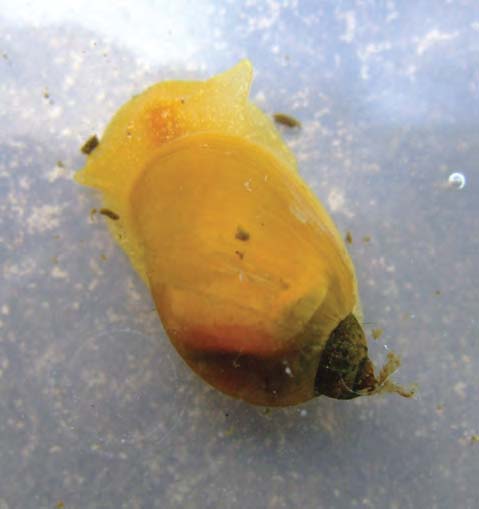|
Ten years ago, when we moved into a new house, one of the priorities was to dig a garden pond. By the following spring this was ready, stocked with suitable plants. Within a few months, specimens of Radix balthica (formerly Lymnaea peregra) had appeared, apparently introduced with the pond plants. Later, Lymnaea stagnalis, Physa fontinalis, and a Planorbid, probably Planorbis carinatus, established themselves. The R. balthica became very numerous, but always remained quite small. The L. stagnalis, on the other hand, grew large, but often had thin shells; on one occasion, as many as 13 were counted. In recent years the pond was invaded by blanket weed, which seemed impossible to get rid of. Last year the numbers of snails were down, and the water was foul, and a dirty black colour. There was nothing for it but to empty the pond and clean it out; the vegetation was cut back substantially at the same time. This was done last autumn, and by the time the pond had been emptied, no snails could be seen, although some could have been hidden among the remaining vegetation. Over the winter, the pond filled up again, and the first Radix balthica was seen in March. This was a good-sized specimen, significantly larger than those that occupied the pond in such large numbers before it was emptied. A few more have been seen since then, but numbers are far lower than previously. Specimens of L. stagnalis and Physa fontinalis have also returned. It seems reasonable to suppose that all these could have been hiding in the pondside vegetation, and have emerged as the pond filled up and the weather got warmer. Nevertheless, as Boycott (1936, Journal of Animal Ecology, 5, pp 116–186) pointed out over 70 years ago, molluscs can colonise isolated ponds remarkably easily. One day, however, a snail appeared that was apparently a newcomer: an albino R. balthica, the like of which I had never seen before in the pond. This was the same size as the normal specimens, but had a yellowish colour, apart from some darkish pigmentation in places (Figure 1). Most of the pigment is in the apical part of the body, and this would be lipofuscin-like pigment which accumulates in the digestive gland (Dimitriadis, 2001, in The Biology of Terrestrial Molluscs ed. G.M. Barker, CABI Publishing, pp 237–257). The buccal mass is visible as a reddish-brown mass at the front of the animal, and there is a pair of dark dots, one on either side of the buccal mass. These latter are not at the base of the tentacles, where the eyes would be, and my guess is that they represent pigment, again probably of a lipofuscin type, in the cerebral ganglia. This snail therefore seems to be devoid of the black pigment melanin, production of which is under genetic control, but still has lipofuscins, which are essentially waste products of metabolism. Albino snails, particularly freshwater ones, are not particularly uncommon, though one imagines that in the wild they might be eliminated more quickly, because they are so much more obvious than normally pigmented ones. So far, I have been unable to locate a definitive account of albinism in snails, but they seem to be popular for aquariums, and have been used a good deal in scientific studies. In many cases, albinism has been used simply as a marker in breeding experiments. The genetics of albinism seems to be fairly well worked out, and in many cases normal pigmentation is simply dominant to albinism. In Physa heterostropha, however, two recessive alleles are involved in albinism (Dillon & Wethington, 1992). None of this explains the origin of the albino snail in my pond, however. Could it be the result of a new mutation – unlikely, considering the rarity of such events. Or might it have arrived from elsewhere – a discarded aquarium snail that somehow had been transported into my garden? |
The albino Radix balthica |
An albino snail in my pond
Issue
15
Page
12
Species

